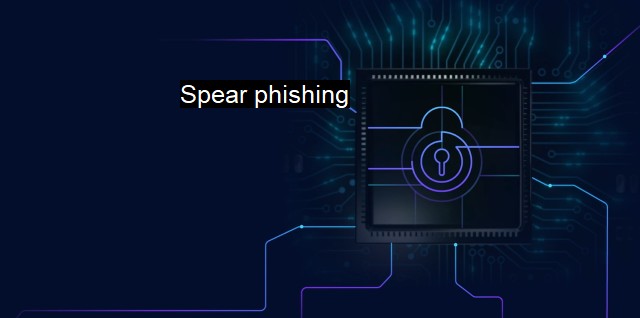What is Spear phishing?
Understanding the Threat of Spear Phishing: Targeted and Powerful Fraudulent Attempts to Steal Sensitive Information
Spear phishing is a digital espionage technique employed within the broader internet context of cybersecurity. A more targeted form of phishing, spear phishing attempts to trick users into providing sensitive information, often for malicious reasons such as fraud or unauthorized access to systems. Given its increasing prevalence, a comprehensive understanding of spear phishing is crucial for anyone using an internet-based platform.At its core, spear phishing is an individually targeted attack, typically against businesses, seeking to access sensitive data, personal information, and proprietary business information. Cyber attackers don't randomly select their targets in the case of spear phishing. Instead, they meticulously choose their victims, customize their approaches, and simultaneously prey on human psychology to achieve success.
The approach starts with research; attackers spend considerable time understanding their targets. They identify key individuals within an organization, typically those with access to the desired valuable information, such as CFOs, department heads, or IT administrators. Personal information such as hobbies, the names of family members, or favorite hangouts may be gathered from social media platforms such as Facebook, LinkedIn, or Twitter.
Having understood their targets, attackers craft personalized emails pretending to be a trusted entity - perhaps a coworker, a bank, or a family member; initiating contact that perceives itself to be harmless. Conveying a level of urgency typically accompanies the email; whether it's a 'security issue' that requires immediate password resetting, a financial issue requiring immediate payment, or an archived encrypted file that needs opening.
Unsuspecting recipients who respond by clicking a link, opening an attachment, or inputting demanded information usually fall victim to the network's malicious invasion. This intrusion provides an open entrance to these cybercriminals, allowing backdoor access into sensitive data and systems - the execution of their ultimate intent.
Antivirus software is not always sufficient to detect and thwart spear phishing attacks which rely more heavily on social engineering than malicious software. This exceptional professional manipulation bypasses technical security through convincing headers, content and disguised URLs that appear innocuous.
Advanced cybersecurity solutions are adapting to identify and nullify spear phishing attacks. These include detection systems that analyze incoming emails for suspicious indicators such as discrepancies in the email domain, embedded links, or unusual requests. Others use machine learning and artificial intelligence to track communication patterns within an organization and flag deviations.
Education and raising awareness is one of the most effective defenses against spear phishing. Regular training for individuals and employees on recognizing and appropriately responding to these attacks reinforces cybersecurity resilience. It is also beneficial to operate a solid data backup system and routinely verify the integrity of backups, because even the most cautious can fall victim.
Spear phishing is a sophisticated cyber attack designed to bypass many traditional defense mechanisms by focusing on the human element. It poses a serious threat to organizations and individuals alike, requiring more than just antivirus protection to counteract. Thus cybersecurity measures should consider human fallibility and enforce a systemic approach that integrates technology, education, and robust policies.

Spear phishing FAQs
What is spear phishing?
Spear phishing is a type of targeted phishing attack where cybercriminals create personalized emails or messages to trick specific individuals or organizations into divulging sensitive information or clicking on a malicious link.What are the common types of spear phishing attacks?
The common types of spear phishing attacks are business email compromise (BEC), CEO fraud, social media spear phishing, and clone phishing.How can I protect myself from spear phishing attacks?
You can protect yourself from spear phishing attacks by not clicking on links or downloading attachments from unknown senders, using antivirus software, enabling two-factor authentication, and keeping your software updated.What should I do if I fall victim to a spear phishing attack?
If you fall victim to a spear phishing attack, you should immediately change your passwords, notify your bank or credit card company, report the incident to your IT department or security team, and monitor your accounts for any suspicious activity.| | A | | | B | | | C | | | D | | | E | | | F | | | G | | | H | | | I | | | J | | | K | | | L | | | M | |
| | N | | | O | | | P | | | Q | | | R | | | S | | | T | | | U | | | V | | | W | | | X | | | Y | | | Z | |
| | 1 | | | 2 | | | 3 | | | 4 | | | 7 | | | 8 | | |||||||